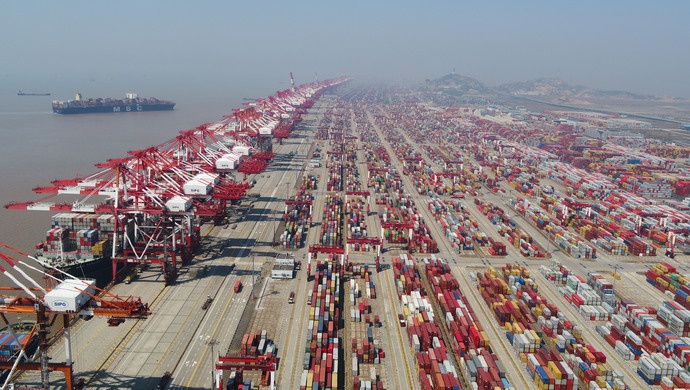|
Shanghai ranks among the top three in the international shipping center for the first time

Shanghai Port has ten consecutive container throughputs, continuous improvement of the container transportation system, steady improvement in service levels and business environment... The "Xinhua-Baltic International Shipping Center Development Index Report (2020) released in the North Bund, Hongkou District, Shanghai, on July 11 )â shows that Shanghai ranks among the top three international shipping centers for the first time, second only to Singapore and London.
Since the index was released in 2014, Singapore, London and Hong Kong have been ranked in the top three. This year's traditional top three pattern has been broken, and Shanghai's ranking has changed from a fourth increase last year to a third.
Yu Shicheng, director of the Shanghai International Shipping Research Center, said that this shows that Shanghai has entered the first phalanx of the global international shipping center. In recent years, the construction of the Shanghai shipping center has continued to break through, especially in the soft power of the business environment and shipping services. Significantly improved.
"This year is the target year for the basic construction of the Shanghai International Shipping Center. I think Shanghai can successfully hand over such an answer sheet." Yu Shicheng said.
The Xinhua-Baltic International Shipping Center Development Index contains three first-level indicators and 17 second-level indicators. It characterizes the internal laws of international shipping center city development from the three dimensions of port conditions, shipping services and comprehensive environment. The index report shows that the top 10 comprehensive strengths of global shipping hub cities in 2020 are Singapore, London, Shanghai, Hong Kong, Dubai, Rotterdam, Hamburg, Athens, New York-New Jersey, and Tokyo.
Looking at the top ten, five are in Asia, four are in Europe, and one is in the Americas. Singapore maintained its leading position and won the championship for seven consecutive years; London regained the second place thanks to the accumulation of advantages in high-end shipping services; Shanghai continued to exert its strength in the construction of shipping hardware and software and ranked among the top three for the first time; multiple indicators in Hong Kong declined and the ranking fell To fourth; Athens benefited from the leading role of the âBelt and Roadâ initiative, ranking rose to eighth.
In recent years, the trend of the world economic center of gravity and the "eastward movement" of international shipping centers have become increasingly clear. Comparing the rankings of Asian shipping centers in 2019 and 2020, 11 cities have increased their rankings, accounting for 61.11% of the total sample of Asia. The East Asian region performed particularly well. Among the 13 sample cities, Shanghai, Hong Kong, and Tokyo ranked in the top ten, with the second echelon of Ningbo Zhoushan, Guangzhou, Busan, and Qingdao in the 11th, 13th, 14th, and 15th places, respectively.
It is worth noting that while Shanghai continues to improve the port hardware facilities, shipping "soft power" has also made important breakthroughs, and the integration of the supply chain node status and high-end shipping service functions has accelerated. In 2019, Shanghai's maritime law firm has reached 629 partners, ranking fourth in the world. Nearly half of the world's top 100 container companies have chosen to set up branches in Shanghai. The scale of Shanghai's shipping insurance business has surpassed the old insurance center Hong Kong for the first time.
Since the outbreak of New Coronary Pneumonia, the port and shipping industry has been directly affected. In order to visually show the impact of the epidemic on shipping, the index report specifically draws a thermal map of ships in the global crude oil, container and bulk transportation sectors. Judging from the changes in heat maps of different ship types, crude oil vessels and bulk carriers are less affected by the epidemic, and container transportation is more affected. At present, container transportation in Asia, especially in East Asia, has gradually recovered, and economic activity has regained vitality.
Looking to the future, the International Port Association (IAPH) expects that a major impact of the new coronary pneumonia epidemic will be to accelerate the digital transformation of ports and increase the efficiency of work such as optimizing arrivals at ports and promoting trade.
|










